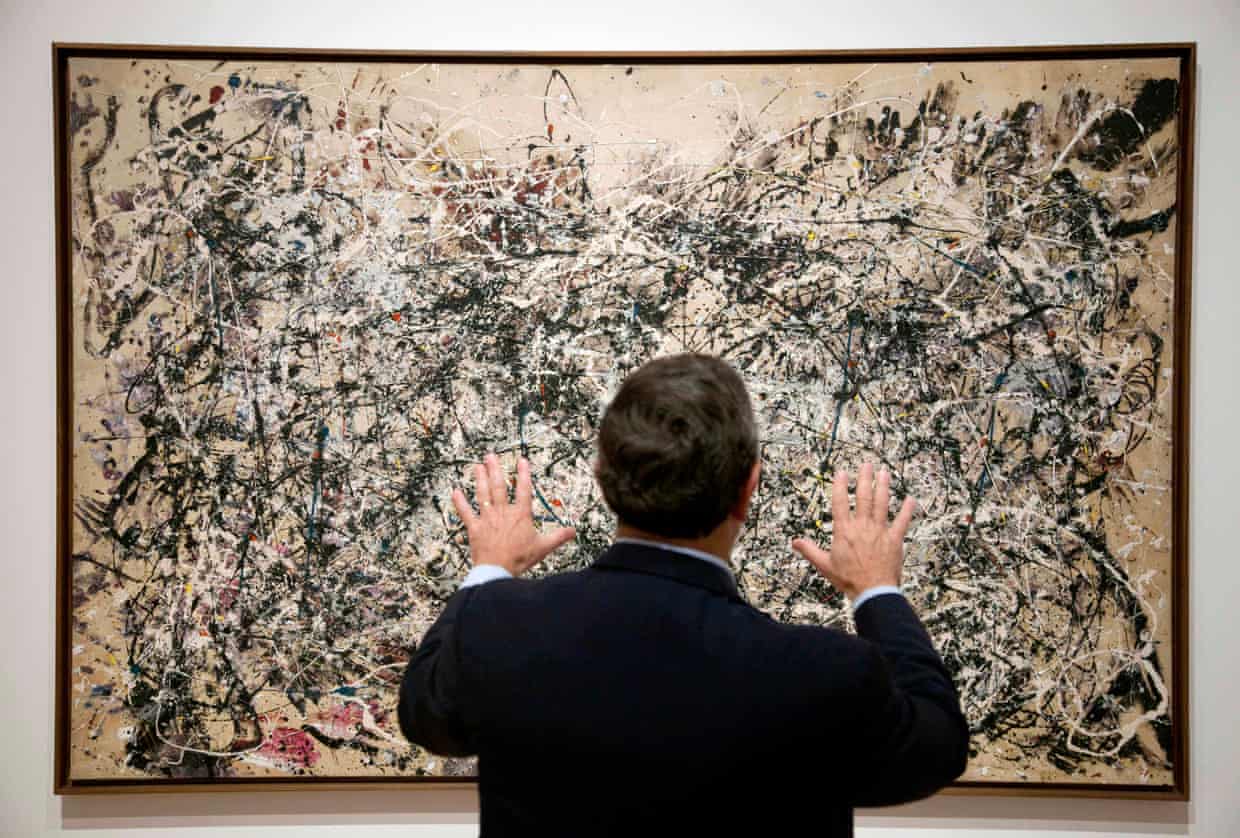Science
Scientists Uncover Origins of Color in Jackson Pollock’s Work

Scientists have identified the source of the blue pigment in Jackson Pollock‘s painting, Number 1A, 1948, confirming it as a synthetic pigment known as manganese blue. This discovery marks the first time researchers have pinpointed the specific blue used by the renowned abstract expressionist, enhancing the understanding of his artistic techniques.
The painting, which measures nearly 9 feet (2.7 metres) in width, is currently displayed at the Museum of Modern Art in New York City. Pollock’s distinctive style is evident through the vibrant, multicolored paint dripped and splattered across the canvas, complemented by his personal touch of handprints near the top. While scientists previously identified the reds and yellows in the work, the origin of the turquoise blue remained a mystery until now.
In a recent study published in the Proceedings of the National Academy of Sciences, researchers conducted a detailed analysis of the blue paint. They collected samples and utilized laser technology to scatter light, which allowed them to measure the molecular vibrations of the pigment. This method provided a unique chemical fingerprint, conclusively identifying the blue as manganese blue.
Edward Solomon, a professor at Stanford University and co-author of the study, expressed excitement over the findings, stating, “It’s really interesting to understand where some striking color comes from on a molecular level.” Manganese blue was popular among artists in the past and was also used to color cement for swimming pools. Its use declined by the 1990s due to environmental concerns.
Researcher Gene Hall from Rutgers University, who has studied Pollock’s work but was not involved in this particular analysis, noted that earlier studies had suggested the turquoise could be manganese blue. The recent findings provide the definitive confirmation needed to link the pigment to Pollock’s artistic choices.
The researchers further examined the chemical structure of manganese blue to understand how it produces its vibrant hue. This type of analysis plays a crucial role in art conservation and helps detect forgeries. Pollock’s technique of pouring paint directly onto the canvas instead of mixing colors on a palette allows scientists to take specific samples from his artworks, enhancing the accuracy of their studies.
To uncover this artistic mystery, the team employed various scientific tools, paralleling Pollock’s own methods of alternating techniques—sometimes using a stick to drip paint, and at other times applying it straight from the can. While many view Pollock’s work as chaotic, he firmly rejected this interpretation, seeing his process as methodical.
Abed Haddad, an assistant conservation scientist at the Museum of Modern Art and co-author of the study, remarked, “I actually see a lot of similarities between the way that we worked and the way that Jackson Pollock worked on the painting.”
This groundbreaking research not only deepens the appreciation for Pollock’s artistry but also highlights the intersection of science and art in understanding historical works.
-

 Science3 months ago
Science3 months agoToyoake City Proposes Daily Two-Hour Smartphone Use Limit
-

 Top Stories3 months ago
Top Stories3 months agoPedestrian Fatally Injured in Esquimalt Collision on August 14
-

 Health3 months ago
Health3 months agoB.C. Review Reveals Urgent Need for Rare-Disease Drug Reforms
-

 Technology3 months ago
Technology3 months agoDark Adventure Game “Bye Sweet Carole” Set for October Release
-

 World3 months ago
World3 months agoJimmy Lai’s Defense Challenges Charges Under National Security Law
-

 Lifestyle3 months ago
Lifestyle3 months agoVictoria’s Pop-Up Shop Shines Light on B.C.’s Wolf Cull
-

 Technology3 months ago
Technology3 months agoKonami Revives Iconic Metal Gear Solid Delta Ahead of Release
-

 Technology3 months ago
Technology3 months agoApple Expands Self-Service Repair Program to Canada
-

 Technology3 months ago
Technology3 months agoSnapmaker U1 Color 3D Printer Redefines Speed and Sustainability
-

 Technology3 months ago
Technology3 months agoAION Folding Knife: Redefining EDC Design with Premium Materials
-

 Business3 months ago
Business3 months agoGordon Murray Automotive Unveils S1 LM and Le Mans GTR at Monterey
-

 Technology3 months ago
Technology3 months agoSolve Today’s Wordle Challenge: Hints and Answer for August 19









